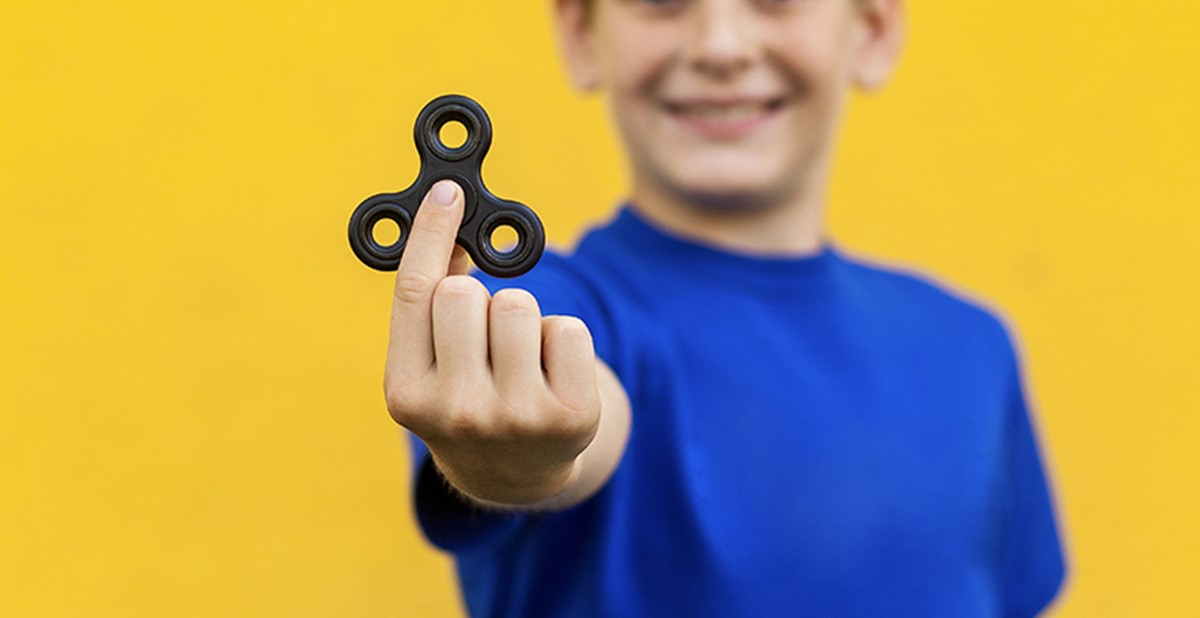Fidget Widgets

Fidget products have long been useful for special needs populations such as individuals with autism or sensory processing issues. Last year, the hottest toy on the market—the fidget spinner—expanded the popularity of these types of gadgets to just about everyone.
“The fidget spinner caught the industry by storm for about six months,” says Taek Sung, senior vice president of sales and marketing for supplier iClick (PPAI 254537). “iClick jumped on it quickly, but we knew it was not going to last. For as fast as it gained popularity, it lost favor just as rapidly.”
The fidget spinner craze sparked an equal number of enthusiasts and detractors in the educational setting. Schools across the United States and in England banned them, blaming them for increased classroom distraction. While some teachers tout the advantages of helping students expend energy, many more agree on quieter anti-anxiety tools that have less movement, such as stress balls or fidget cubes. In fact, The Wall Street Journal reported that a sixth-grade classroom in Georgia increased its average scores on a writing assessment from 73 percent to 83 percent after providing students with stress balls. Even more impressive, students in the classroom who had been diagnosed with ADHD improved their test results by 27 percent.
Now that fidget spinners have had their day, the hunt is on for new gadgets that alleviate restlessness during long days at school or at work. New stress-relieving products are being rolled out, including updated versions of the fidget spinner with themes, lights and speakers.
“Companies in our industry are always looking for the hottest trends in marketing and products that will make a lasting impression on their brands,” says Sung. “In that vein, iClick launched another innovation—our patented Spinnit Pen, which combines the fidget spinner with a pen to create a unique solution with staying power.”
The Strategist reports that “squishies” are emerging as a promising anti-anxiety tool that may be less distracting than a spinner. Squishies are soft, textured toys that resemble everyday items such as fruit, desserts and animals. Some are attached to keyrings, and others are standalone collectibles. Unlike stress balls, squishies are softer and slower to regain their shape after being squeezed.
Adult coloring books also continue to be popular as studies support the health benefits associated with art therapy. Coloring helps adults achieve a calm state of mind, similar to the after-effects of mindful meditation, according to a report by CNN. It can also reduce anxiety and help to achieve short-term focus.
“Over the past few years, we have seen all sizes of businesses, including many in the Fortune 500, use coloring books to increase productivity, promote creative thinking and provide stress relief, relaxation and fun in the workplace,” says Roni Wright, MAS, vice president of supplier The Book Company (PPAI 218850). “The opportunities are almost endless, as interest is coming in from the healthcare, travel and education sectors, too.”
---
Case Study

Getting Bent Out Of Shape For More Business
A health food store that was looking for a way to increase the average dollar amount of purchases decided to reward customers with a gift for spending over a certain amount. They wanted an item that was unique, useful and related to physical well-being.
The store opted for a gel stress toy which, unlike the foam rubber model, can be manipulated to substantially change shape. It was a good fit for the wellness brand, since the act of squeezing and releasing has been proven to assist in relieving stress and provides light exercise for those with muscle strain. The stress toys were branded with the store’s name and logo.
After the promotion ended, the store received so many inquiries about the stress shapes that they began selling them as part of their inventory.
Source: Fresh Promotions Australia, www.freshpromotions.com.au
---
You Had Me At Hashtag
Toy and gadget makers hope to capitalize on trends fueled by social media.
A recent article in The Wall Street Journal shed light on how toy suppliers are striving to more quickly embrace trends that begin with social media. They are studying retail establishments like Forever 21 that make no bones about their strategy: spotting emerging teen apparel trends and stocking them in-store in as few as 25 days.
As Veruca Salt articulated so well in Charlie and the Chocolate Factory, “I want it now!” When a product becomes hot, today’s consumers have little to no patience in waiting for it, so turnaround times that worked in the past may be woefully inadequate.
The toy industry grew a disappointing one percent last year, compared to five percent in 2016 and seven percent in 2015, according to NPD research firm. NPD says the 2017 growth was the result of social media as opposed to products tied to major movies, which have driven sales in prior years.
Both Mattel and Hasbro have recently established teams to follow social media trends and respond with product development ideas. For example, Hasbro’s popular Speak Out board game was inspired by online videos of people trying to talk while wearing dental mouth guards. The game was developed in 11 weeks.
Zing, a smaller toy supplier, employs three social media experts who look for trending hashtags and opportunities to capitalize on them. In 2016, they noticed that a product similar to rosary beads was getting significant online play as a fidget tool. Two months later, they had a prototype, and four months after that, their product, Thumb Chucks, was on the market.
Some of the challenges for companies that favor this product development model include identifying trends that won’t burn out before they can be put in the hands of consumers and ordering inventory in amounts that satisfy demand but don’t result in an excess supply of items that have outlasted their moment. Suppliers who are committed to chasing the latest trends will need to crack the code so that the rewards outweigh the risks.
---
Terry Ramsay is associate editor of PPB.

